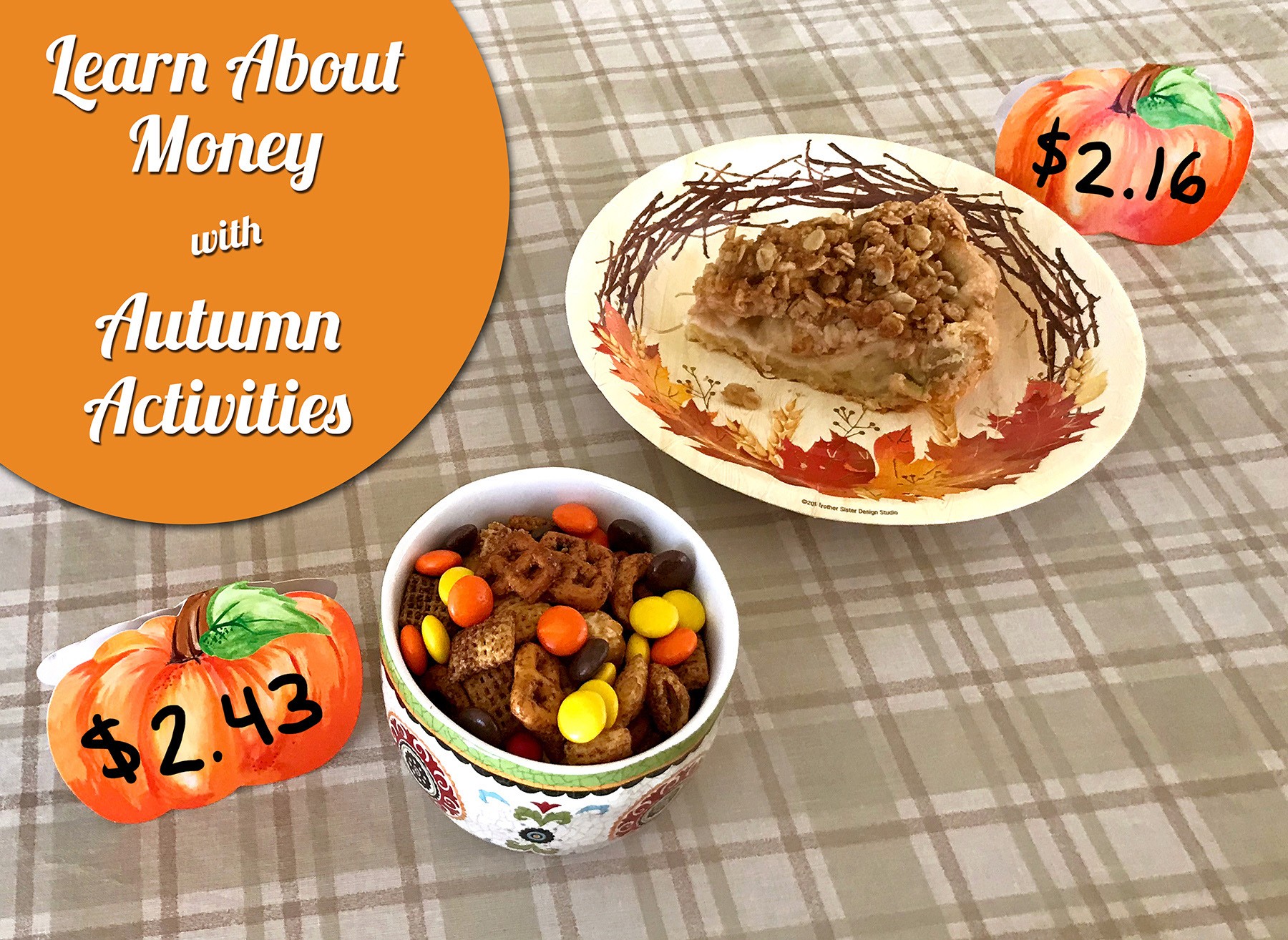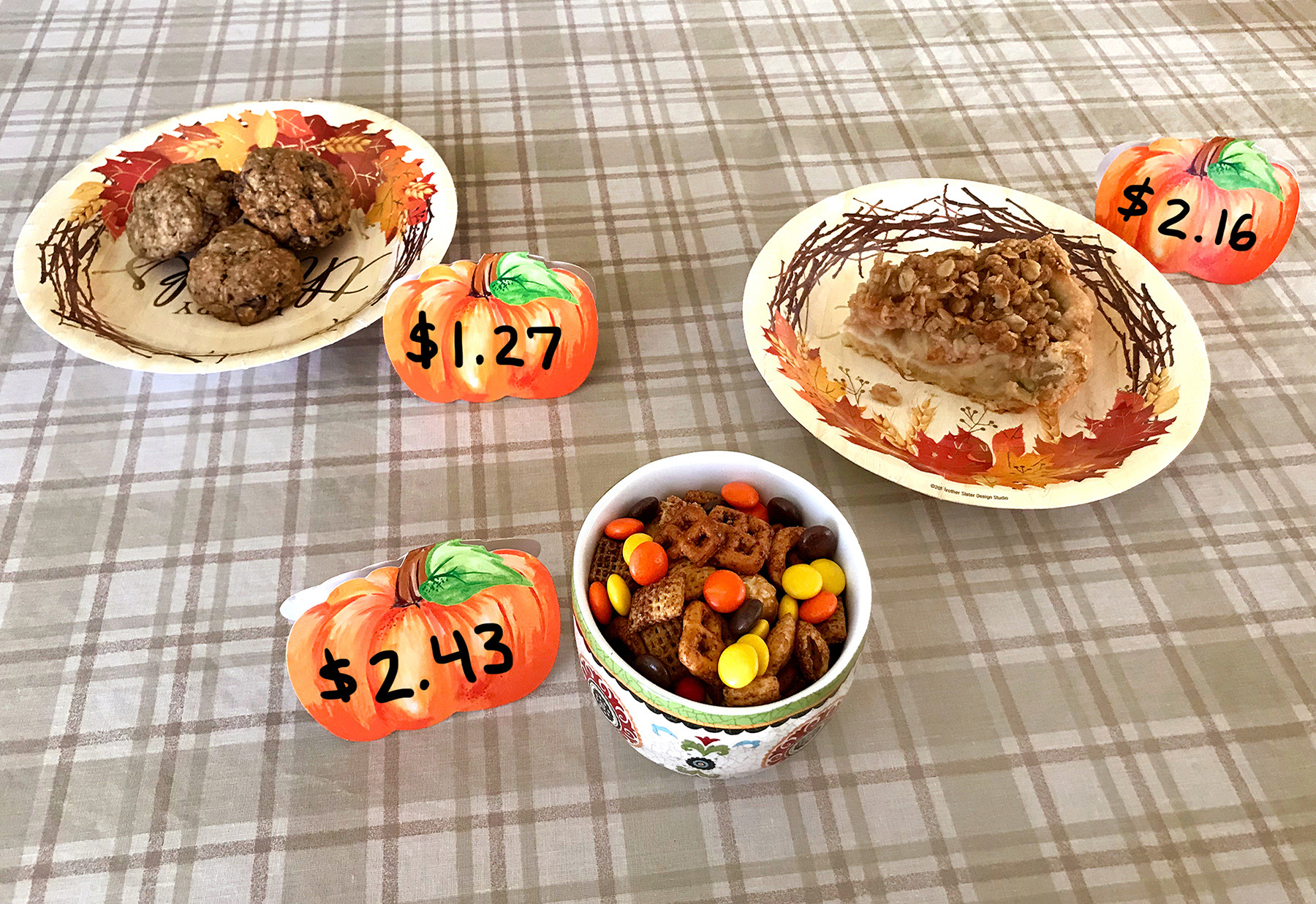
Teach money skills with festive fall-themed activities kids can do right at home! In our November blog post, we're featuring three flexible, fun activities that reinforce important money concepts, such as making change, counting money with coins and bills, and basic operations with money. Whether you and your little ones are in the mood for a trip to the pumpkin patch or want to enjoy the flavors of fall with a fall bake sale, we have the inspiration you need to practice money skills and celebrate the season!
The following activities are great for elementary teachers who are looking for creative ways to help little ones practice money skills at home and for homeschool parents wanting to mix up their money skills routine. These activities are extremely flexible! You can take the basic premise of each idea and modify it to meet the needs of your students. The important thing to concentrate on with each of these autumn-themed activities is applying each money skill to a real-life scenario. Your students will be having so much fun that they may not even realize how they are strengthening their money skills in the process!
Remember to tag @iknowit on social media so we can check out your festive money skills fun!

Help students practice making change by hosting a fall-themed bake sale right at home. You can opt for either the real or pretend version of this activity—students will be learning about making change either way. Plan on hosting the bake sale for siblings, cousins, or other family members.
If you choose to host a sale with homemade baked goods, gather your little ones together for a family baking day! Make a few of your favorite fall recipes. You don't need to make anything extra fancy—think apple crisp or homemade apple sauce. 😉 You could always whip up a batch of brownies or chocolate chip cookies instead, or in addition. Once you have a few tasty treats on hand, help your little learners decide on a fair price for each treat. Here's where you will step in to make the activity grade-level appropriate. Choose prices that will challenge kids as they make change for each "purchase." Instead of pricing a brownie slice at 50 cents, for example, set a price that may require a little more math, like 61 cents.
Arrange your baked goods in an appealing display, on the dining table or kitchen counter, for instance. Label the different treats with a description and a price. Your students will take turns running the bake sale. They can either use real money or play money but be sure students whose turn it is to make purchases pay with dollar bills, such as a one-dollar bill, five-dollar bill, or even a ten or twenty. Each child will take a turn making change for the other child(ren)'s treat purchases. Provide a notebook and a pencil so the "seller" can do the math on paper if needed. Children will switch roles so everyone has a chance to buy a treat and make change.
You can also do this activity with pretend baked goods. Print out pictures of different fall treats or even use make-believe food toys if you have them. Conduct the activity the same way you would if you were using real baked goods.
Your students will love making change with this autumn bake sale activity!

Here is another clever activity that teaches kids about counting money, including bills and coins. You can set up a general store in your living room using items you have lying around your house—bonus points if you use autumn-themed items to make it a seasonal activity! Kids will practice counting out the exact dollar amount listed as the price of each item to "purchase" goods at the general store.
This is such a simple activity to set up with your students. You can use apples or pears, lunch-sized bags of snacks, mini pumpkins or gourds, fall-themed stickers, pencils, or erasers, or any number of seasonal prizes from your local dollar store. Set up the items around your living room and include a sticky note price label on every piece of "merchandise."
Provide little ones with a shopping list, like this one:
Students will shop around the general store for the items on their shopping list. Feel free to provide them with a little shopping basket to carry their goods! You may either choose to have students count out the money for one item at a time (like one eraser), a group of similar items at once (like all three erasers), or all the items in their basket. You can decide on the difficulty level of the activity based on your students' grade levels. Since students would need to do basic addition if they are counting money for more than one item, you may or may not want to include that skill in this activity.
Have fun with this one—there is no need to even leave your living room for a trip to the general store!

Take your students and their money skills on the road with a trip to the pumpkin patch! Kids will practice basic addition and subtraction with money as they pick out a couple of pumpkins they want to purchase. A field trip is the perfect excuse to try out those money skills in the real world!
Gather up your little learners and head to your local farm or pumpkin patch—each student can pick out a pumpkin (and maybe another seasonal treat). Make sure you pick out something too—you will be putting one item back so they can do a little subtraction practice as well. Your students will add up the total cost of the pumpkins they have picked, plus any extra treats, including yours. When they have figured the sum, announce that you will be putting your item back, and ask them to subtract the cost of that item from the total.
Students can put all of their money skills to the test: counting out the coins and bills to pay for their pumpkins, adding and subtracting with money, and even figuring out how much change they can expect if they pay with a larger bill.
We hope you and your students love these money skills activities! What are your favorite activities for teaching money skills? We want to hear from you! Drop us a line in the comment section below.
If you are looking for more fun, interactive math activities that kids can do from home, check out the hundreds of math lessons available on iknowit.com.